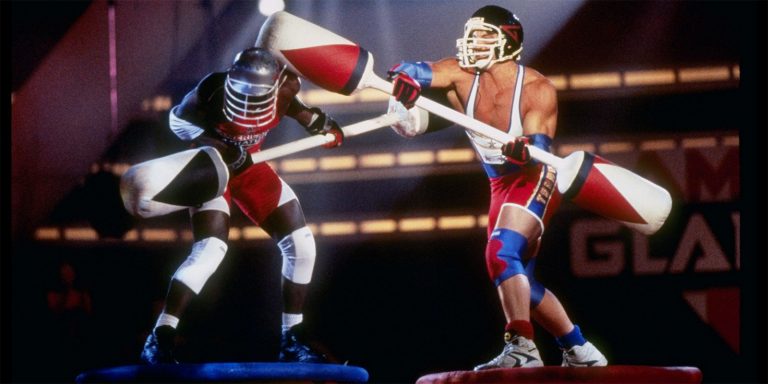Rankings of Swingshot, Powerball, Atlasphere and every other competition from the original run of American Gladiators.
We’re rapidly approaching the 30-year anniversary of the debut of American Gladiators, which made its way onto syndicated television in September of 1989. Pitched as a hybrid of Olympic-style competition and the outsized characters and Spandex of pro wrestling, American Gladiators had a very successful run (and made a nice-sized footprint in the zeitgeist). The initial run lasted seven seasons and spawned a number of spin-offs, from international editions to a NES game to a live dinner show in Orlando to a writers’ strike-borne reboot in 2008.
I watched American Gladiators some as a kid. I remember other kids were really into it, though; I have a vivid memory of a big argument at a slumber party over whether to watch American Gladiators or that week’s special WWF’s Saturday Night’s Main Event. I was a wrestling fan and argued hard for SNME. I don’t remember which one won out.
But I’ve rediscovered American Gladiators lately, thanks to some renewed surfing of the obscure channels my OTA antenna picks up. I stumbled onto American Gladiators on something called the Charge network and I’ve been watching quite a bit of it since.
(On quickly researching, I’m disappointed to announce Charge is owned by Sinclair. Damn. I guess it’s time for the Chick-fil-A Rule to go into effect — assuage your guilt for enjoying a product provided by an evil, hypocritical, un-American corporation by making a donation to a relevant charity when you do. Since Sinclair is determined to destroy the impartial free press, I will now make a donation to ProPublica in honor of American Gladiators.)
(I’ll take sentences never uttered before in human history for $800, Alex.)
Anyway, back to American Gladiators. During the show’s initial seven-season run, contestants competed in 16 different events. (Not counting the final Eliminator obstacle course.) And as I’ve been watching the back catalog, it’s become clearer and clearer to me which events are good and which aren’t so good.
So here are my definitive (albeit subjective) rankings of all 16 American Gladiators events, from worst to best for dramatic effect.
16 | SkyTrack
Two competitors race a Gladiator on an upside-down race track using velcro gloves.
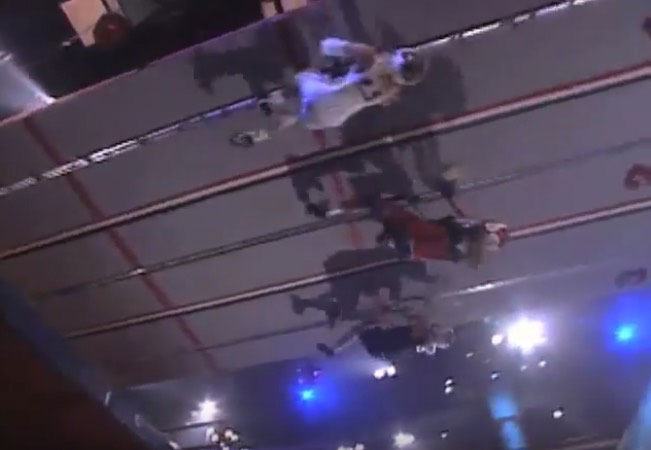
You can tell from Mike Adamle’s commentary that American Gladiators was pumped for SkyTrack when it debuted in the show’s third season. It seemed like a spectacular idea on paper: The contestants would race a Gladiator on a massive, twisting, upside-down track. Where else could you see anything like that? The races would be thrilling, despite the safety harnesses they’d feel dangerous and they’d become a signature event.
Except… there were gigantic fundamental issues in execution. One, the ’90s camera work (and standard definition resolution) made it extremely difficult to follow the action. It was almost impossible to tell who was winning because of the twisting track. It was nearly impossible to distinguish the competitors, as their safety gear covered the color of their uniform. The race looked frustrating, not fun, as many contestants struggled with the mechanic — and the Gladiator virtually always won.
Basically, it was just bad TV. It’s why SkyTrack, despite the high hopes, didn’t even survive until the end of the series run.
15 | Snapback
Competitors and Gladiators with bungee cords attached to their backs compete to grab (or prevent the grabbing of) large cylinders suspended from the ceiling.
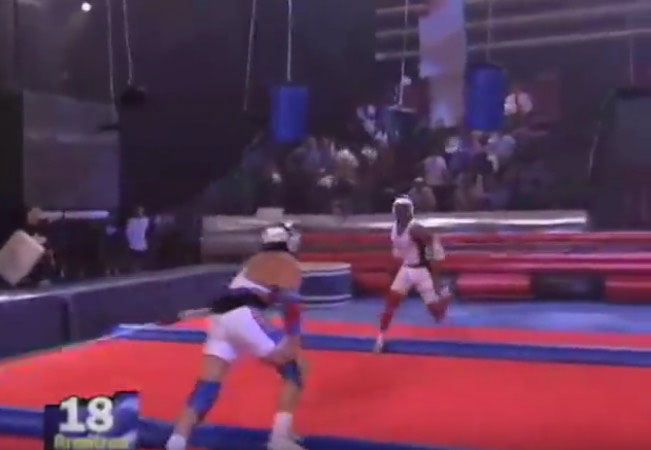
Snapback was basically the American Gladiators version of that old SNL Mike Myers sketch where he’s a hyperactive child who keeps getting jerked backwards by a child leash. The event was added later in the show’s run (season six) and lacked the excitement the creators were hoping for.
The bungee cords were too restrictive, meaning that, in most cases, the contestants got free runs at the cylinders because the Gladiators couldn’t adjust their path fast enough to stop them. The excitement was low, and watching contestants jerked backwards by bungee cords just looked frustrating, not exciting.
14 | Tug-O-War
Competitors and Gladiators stand on tilting platforms and play tug-o-war.
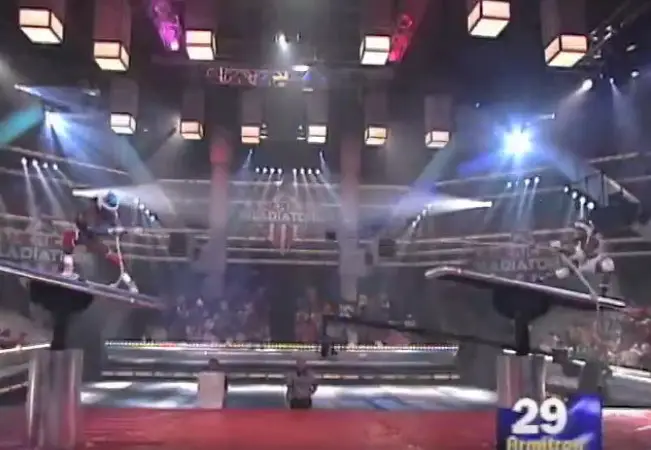
You know an event is fundamentally flawed when you have to think of a way to completely alter its DNA to make it fair. That’s what happened with Tug-O-War. It seems the producers knew the contestants didn’t stand much of a chance against the Gladiators straight up — as the Gladiators pretty much always had massive weight and glamour muscle advantages — so they added tilting platforms. The contestant would start with their platform tilted backwards, giving them an instant advantage to offset the strength disparity.
And while that sort of worked, the action was never too exciting because, eventually, the strength mismatch played out as expected. Most contestant Tug-O-War victories were the result of the Gladiator accidentally slipping off the platform after pulling too much of the rope to their side.
13 | Whiplash
Competitors try to wrestle a bone-shaped item away from the Gladiator, or pull the Gladiator out of the ring.
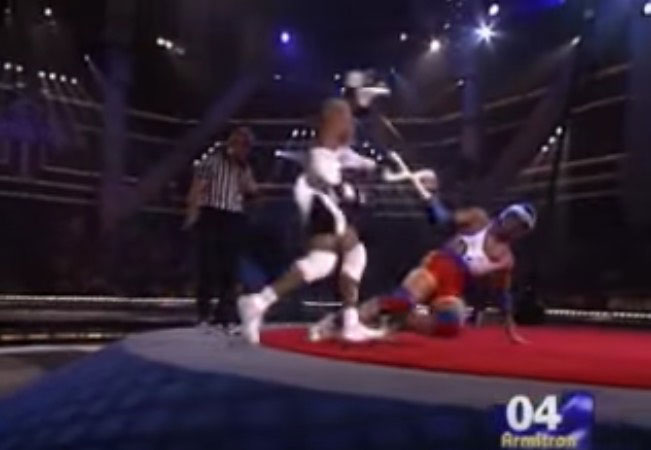
Whiplash, in practice, mostly became a contestant frantically running in circles trying to yank the Gladiator with them. I’m not sure I ever saw a contestant successfully pull the bone away, either. While it had more drama and excitement than any of the events I’ve previously listed, it just wasn’t particularly engaging to watch.
12 | The Maze
Contestants navigate through a large maze, sometimes coming across Gladiators who would impede their progress.
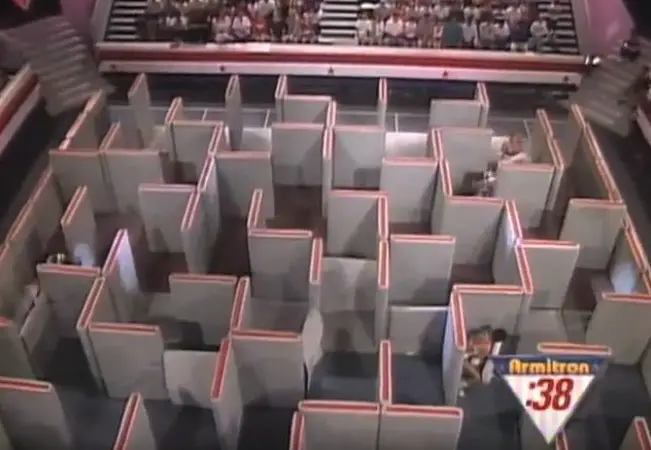
It’s not fun to watch someone do a maze. Any kind of maze. I watch my son do mazes on restaurant placemats and it’s exhausting. Human mazes are even worse. You either have a bird’s-eye view, so you just judge the person for making bad decisions (“No, idiot, don’t go left!”), or you get the first-person Doom-style view, where you can’t tell what’s going on and lack the agency to help with navigation. That was basically the Maze.
It also suffered from inconsistent aggression from the Gladiators. Sometimes they’d just give a little shove and let a contestant by; sometimes they’d beat the hell out of the person. It all felt too arbitrary (and would be remedied when the Maze was replaced by the far superior Gauntlet).
11 | Hang Tough
Contestants swing on a field of rings attempting to cross to another platform (or just hang on for the duration of the event) while a Gladiator tries to knock them off.
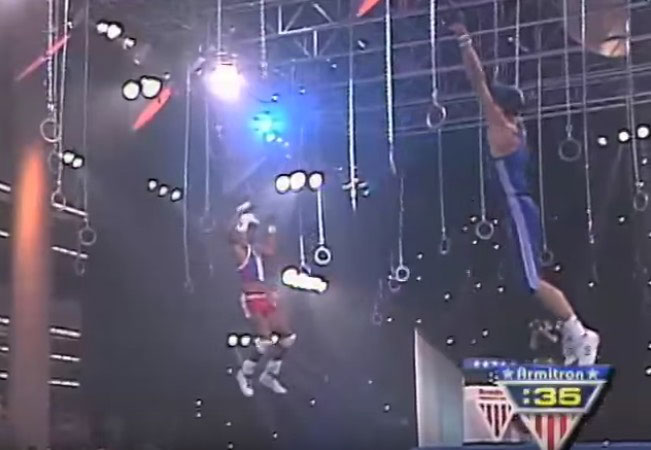
Hang Tough was a frequently recurring event, featured on almost every season of American Gladiators — but it wasn’t that great to watch. Even contestants with gymnastics backgrounds struggled on Hang Tough, as the spacing of the rings made it easy to lose momentum and quickly halt their progress. Lots of PTSD flashbacks to struggling on the rings in elementary school gym class in this one.
The referee’s voice constantly yelling, “Gotta move, gotta move,” also becomes extra irritating, as you really feel for the contestant who lost momentum and simply can’t. The Gladiators were also too dominant in the event — turns out it’s a lot easier to hunt down someone on rings than blow past someone.
10 | Swingshot
Contestants on bungee cords jump from high platforms, bounce up, and try to grab balls off a cylinder suspended from the ceiling — while Gladiators on bungee cords try to stop them.
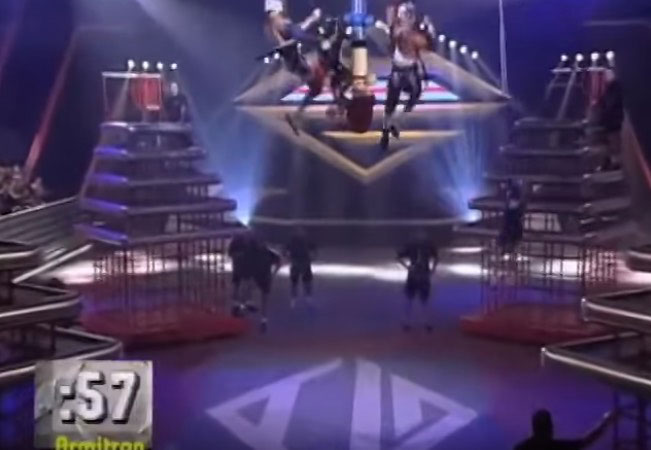
The theory of Swingshot is pretty good, and it looks like it’d be fun to try. At least until you blow out your knee in 17 different places. And it also made for pretty good TV. The problem, however, was that part of the appeal was supposed to be crazy, mid-air collisions between the contestants and Gladiators. Those rarely happened.
It was too hard, it seems, for the Gladiators to time out and target their jumps to continuously arrive at the cylinder at the same time and place as the contestants. So they became only a minor factor — mostly, the event became an issue of the contestants versus their own unpredictable bungee cords, subsequently unpredictable physics, and flailing struggles to get back onto their tall platforms to jump again.
9 | Atlasphere
Contestants roll around in giant balls trying to activate sensors on pods, Gladiators also roll in giant balls trying to stop them.
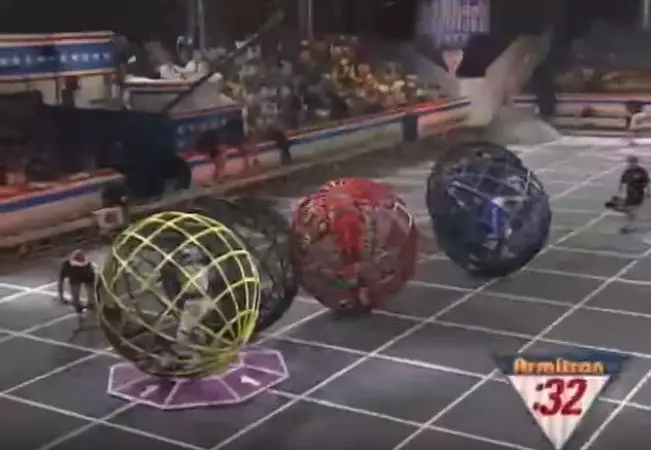
Atlasphere is one of the iconic events of American Gladiators, but suffered from a few major problems. One, the scoring pods on the ground were poorly built, so often a contestant would roll over one but somehow miss out on triggering it. And two, the balls were heavy and hard to move, which led too far too many traffic jams with everyone pinned against the wall, unable to move. That’s why Atlasphere, despite being a signature event, didn’t survive the entire run.
8 | The Wall
Contestants climb a rock climbing wall, Gladiators chase them down to try to pull them off.
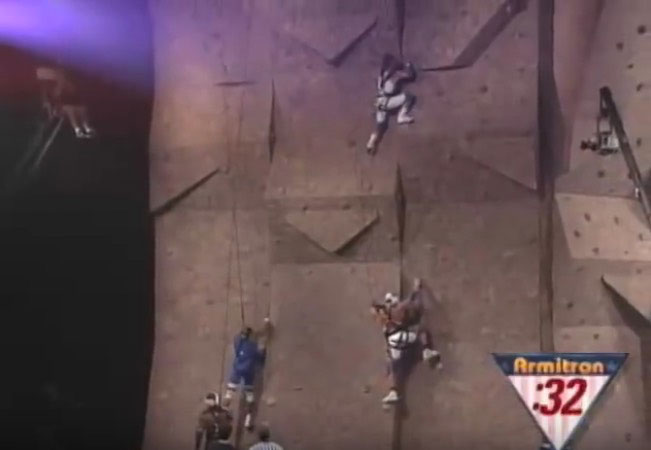
The Wall is a classic American Gladiators event and often a good one to watch — but the show was never able to get it perfect. The Wall saw more tinkering with the rules than pretty much any other event. When the contestants’ head start time was too small, it was rare anyone ever made it to the top. So the show lengthened the start time — then it was too long, so the Gladiators rarely caught anyone. So the show expanded the wall and had contestants and Gladiators start simultaneously, which robbed the event of some of the drama.
7 | Human Cannonball
Contestants swing on a rope toward Gladiators, attempting to knock them off platforms.
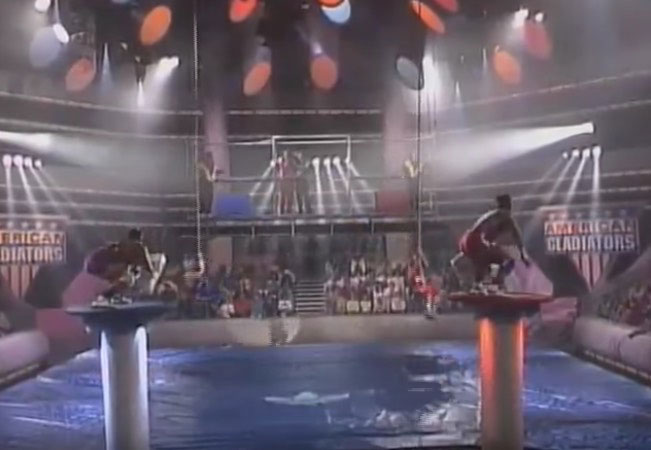
Human Cannonball is definitely fun to watch — the contestants flying across the arena on ropes, tucking, and slamming into the Gladiators (who are just holding relatively small pads to brace for the impact). The big downside, though, is that it’s the sole event that only showcases the Gladiators’ athleticism, not the contestants. The announcers would pay some lip service to the contestants properly tucking and using correct form — but really, it all came down to the Gladiators’ proper balance and strength.
6 | Joust
Contestants and Gladiators battle with pugil sticks, trying to knock each other off their respective platforms.
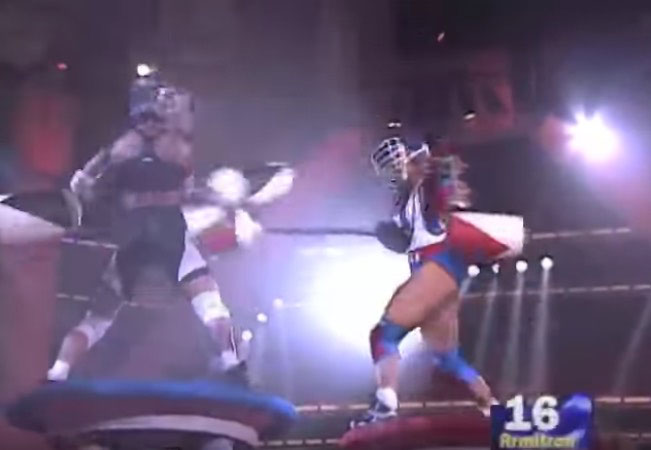
Joust is a fundamental part of American Gladiators, one of only four events that was a part of all seven seasons. And it’s usually a good one to watch, with lots of action and drama. (And headshots that would never be allowed today — more on Gladiators and its lax feelings on concussions later.) The only demerit is that the Gladiators were far, far too dominant. Most editions of Joust ended in the contestant being knocked off by the taller, stronger, more experienced Gladiators, and it was extraordinarily rare that a Gladiator would be knocked off by a contestant.
5 | Gauntlet
Contestants try to run past five consecutive Gladiators, all of whom have various padded devices they can use to impede the contestant’s progress.
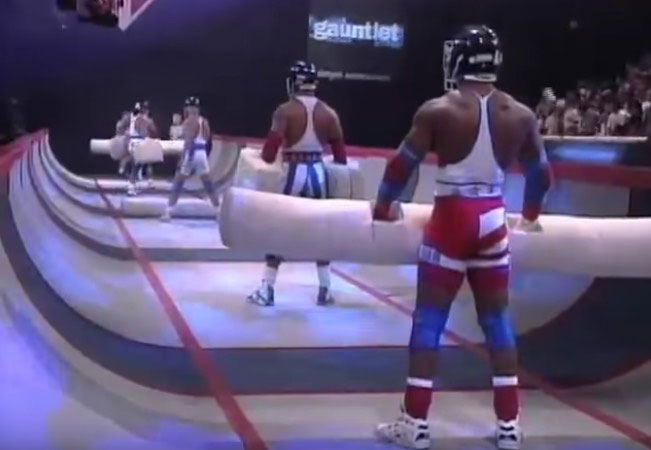
The Gauntlet was a later addition to American Gladiators, replacing the Maze (as discussed above), but one that really showcased the best of what the show could offer. It was one of the events where the smaller contestants could try to use their speed and agility to get past the bigger, stronger Gladiators. Sometimes that would work. Sometimes it wouldn’t, and the contestant would get amusingly pummeled.
The Gauntlet runs only lasted 25 seconds — always 25 seconds of pure action.
4 | Pyramid
Contestants climb a giant foam pyramid while Gladiators try to throw them off.
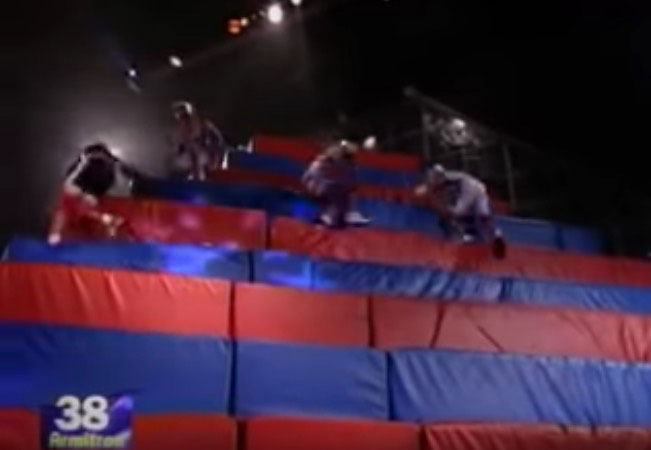
Pyramid isn’t a very fair event. The Gladiators have higher ground and unless a contestant can get lucky and make a move early when everyone’s jumbled up, usually they’re just in for 30 seconds of Sisyphsian frustration. But the event is still exhilarating and features the most extreme falls possible — the Gladiators are sometimes throwing the contestants 10, 15, or even 20 feet down the matted pyramid. (And taking the falls too — in the British version of the show, one of the Gladiators suffered a career-ending neck injury on the Pyramid.)
3 | Powerball
Contestants try to put balls into cylinders while Gladiators attempt to tackle them.
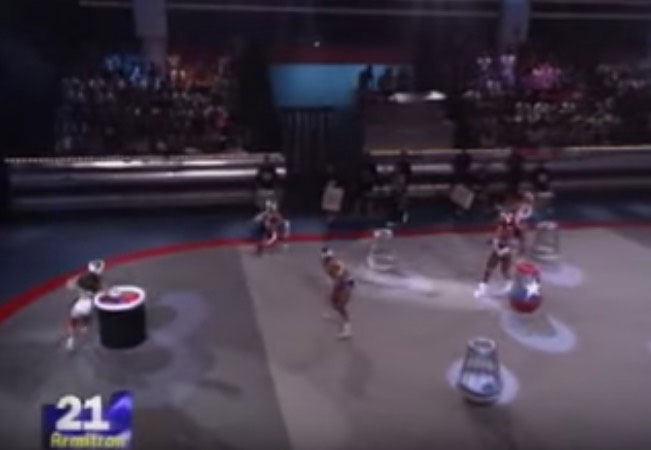
Powerball is another of the events that was part of American Gladiators from its premiere to its finale. In a way, it’s the epitome of the show. Smaller, faster competitors using speed, cunning, and endurance to score on the Gladiators — and getting just massacred by tackles in between their successful attempts. Powerball couldn’t work today — the barely perfunctory helmets and crushing hits in the event no doubt caused an outbreak of undiagnosed concussions. But as an event during a time when no one cared about head injuries? Nonstop, wild, violent entertainment.
2 | Assault
Contestants run station to station, firing weapons at a Gladiator who is firing a tennis ball cannon at them.
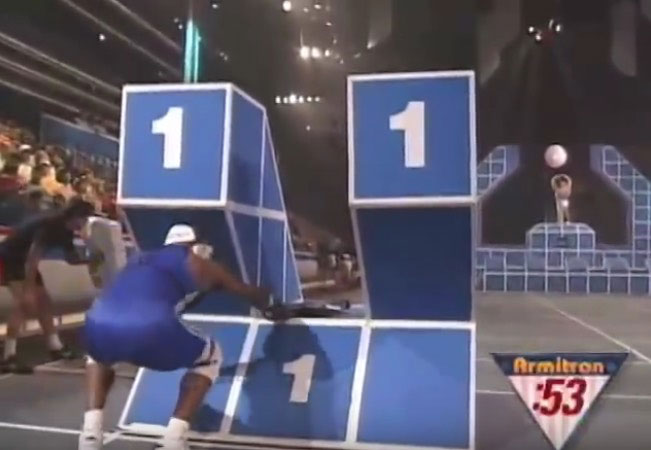
Assault is always great to watch, even if it’s really hard to see the balls hitting the contestants in real time thanks to standard definition. A lot of the appeal comes from Assault looking like it’d be the most fun event to compete in — also, not coincidentally, the only one where success doesn’t require athleticism or training.
1 | Breakthrough and Conquer
Contestants try to score a touchdown by running past a Gladiator, then immediately have to sumo wrestle another Gladiator.
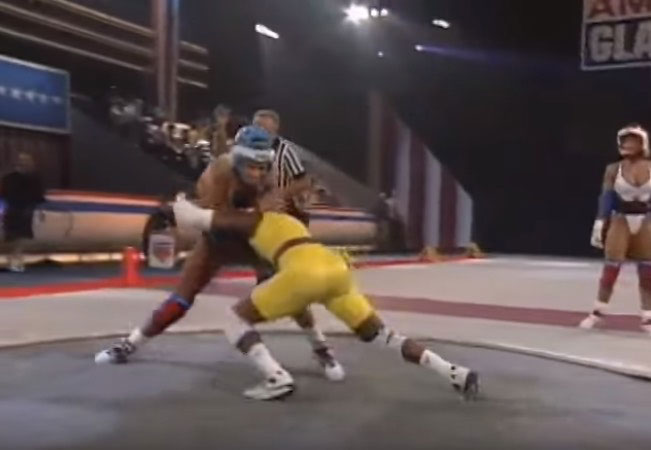
Breakthough and Conquer is the ultimate mix of everything great about American Gladiators. First, contestants have to use speed and skill to try to get past a Gladiator to score a touchdown — which either leads to an impressive show of athleticism, or a monster tackle. Then the contestant immediately has to get up and wrestle another Gladiator, trying to push them out of a circle in 15 seconds. That requires strength, but also lots of strategy and leverage.
The mix of the two disciplines really lets the best contestants shine, the action of nonstop and fast paced, and, really, it feels like the kind of game you could’ve played for hours and hours as a kid. Or for five minutes as an adult until someone hurt their back.
